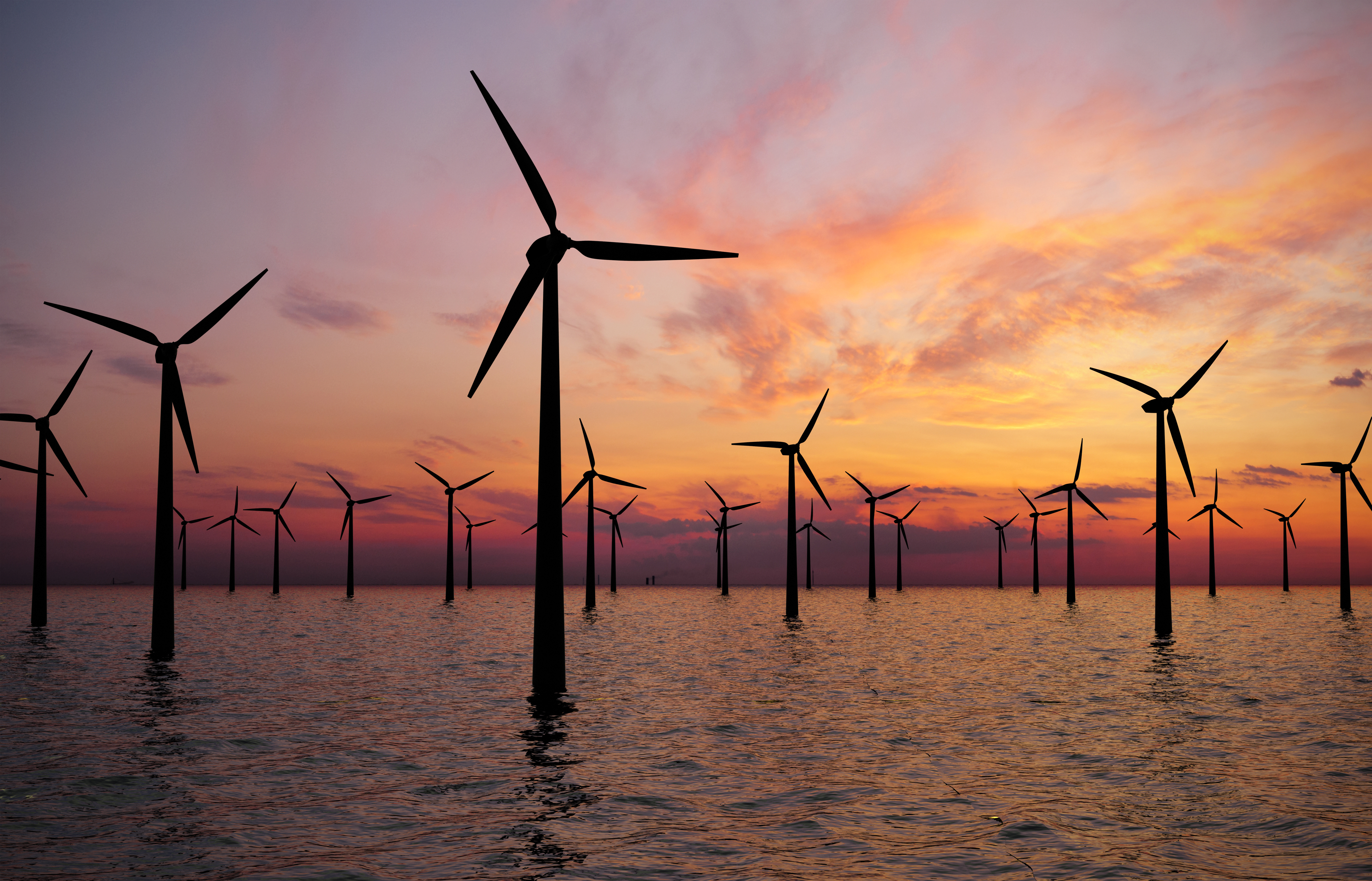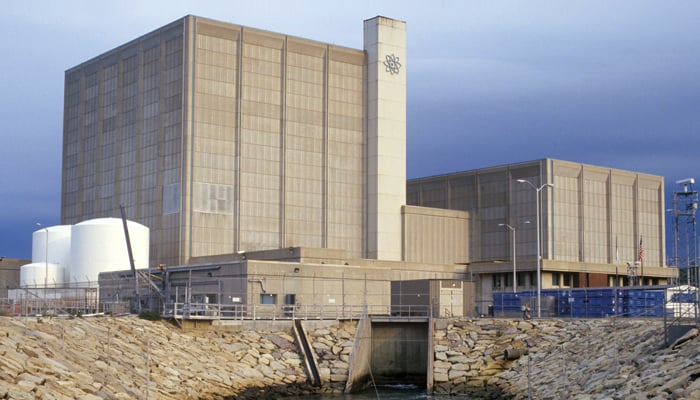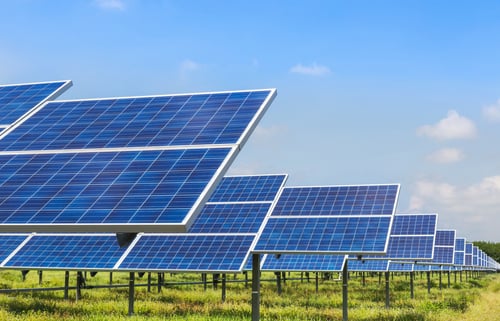Brayton Point in Somerset was once the largest coal-fired plant in Massachusetts, and was the last to be decommissioned in 2017.
ESG & Industry Updates
Offshore Wind Breathes New Life into Old Coal Facility in MA
Posted by Kelly Burke on Mar 25, 2022 10:45:00 AM
Topics: Massachusetts, Climate Change, Clean Energy, offshore wind
Biden's Offshore Wind Plan Bolsters NE Clean Energy Goals
Posted by Kelly Burke on Jul 22, 2021 11:11:53 AM
The Biden Administation has the ambitious goal of bringing 30 gigawatts of offshore wind online by 2030, and 1.4 of those gigawatts are slated to come from the New England coast.
Topics: Massachusetts, Carbon Emissions, renewable energy, Clean Energy, offshore wind
This April, the New England Ratepayer's Association (NERA) filed a petition asking the Federal Energy Regulatory Commission (FERC) to "declare exclusive federal jurisdiction over wholesale energy sales from generation sources located on the customer side of the retail meter (rooftop solar), and order that the rates for such sales be priced in accordance with public law.”
Topics: Solar, Clean Energy, net metering
Too Late for Canaries: Coal Companies File for Bankruptcy Protection
Posted by Ed Burke on Jan 9, 2020 11:49:57 AM
The United States' largest privately owned coal company filed for Chapter 11 Bankruptcy protection in late October. Murray Energy joins at least 7 other major companies as casualties in the move toward cleaner and more sustainable energy.
Topics: coal, renewable energy, Clean Energy
May 31st 2019, the Pilgrim Nuclear Power station in Plymouth, MA shut down for the last time. Now the lengthy process to fully decommission the plant and return the site to its former condition begins.
Topics: Massachusetts, power plant emissions, Clean Energy
Holyoke's Mt Tom Site is a Blueprint for Success with Renewable Energy
Posted by Ed Burke on Jun 6, 2019 10:43:00 AM
Holyoke MA, the site of the last coal fired plant in MA, this year will see the smokestacks of the now closed plant taken down. The site is now home to the largest solar farm in the state, and the first large scale renewables battery storage system. By 2017, the Mount Tom site housed over 17,000 solar panels, and in 2018 Engie (formerly GDF Suez) installed 3 megawatts of battery storage on site to keep supply to the grid consistent.
Topics: Holyoke, Solar, Clean Energy
Topics: emergency response, hurricane harvey, Clean Energy
2018 has been a busy and effective year for Massachusetts' quest to advance Clean Energy within the State. Here are some highlights:
Topics: Massachusetts, Clean Energy
Subscribe to Email Updates
Recent Posts
Posts by Topic
- Carbon Emissions (42)
- Climate Change (32)
- renewable energy (31)
- Oil & Energy Magazine (27)
- EPA (24)
- Massachusetts (21)
- Biden Administration (18)
- decarbonization (15)
- Biodiesel (12)
- natural gas (12)
- EPA Mandate (11)
- RFS (11)
- Solar (11)
- Biofuels (10)
- Keystone XL (10)
- methane (10)
- offshore wind (9)
- Clean Energy (8)
- Energy Independence (8)
- Energy Infrastructure (8)
- Safety (8)
- Biodiesel Tax Credit (7)
- Emissions (7)
- Ethanol (7)
- ev (7)
- Cellulosic Ethanol (6)
- EV Charger (6)
- RINs (6)
- Trump Administration (6)
- environmental justice (6)
- Fracking (5)
- Inflation Reduction Act (5)
- Technology (5)
- US Crude Exports (5)
- electric vehicles (5)
- maine (5)
- tesla (5)
- ACT (4)
- Mass DOER (4)
- TransCanada (4)
- Utility Rates (4)
- battery (4)
- fuel management (4)
- massachusetts biodiesel mandate (4)
- obama (4)
- paris accord (4)
- remote tank monitoring (4)
- CARB (3)
- CRUDE (3)
- Carbon Capture (3)
- Clean Fuel Production Credit (3)
- E85 (3)
- Emergency Fuel (3)
- Massachusetts Clean Cities (3)
- Waste Feedstock Biodiesel (3)
- china (3)
- clean power plan (3)
- net-zero (3)
- renewable diesel (3)
- solid state battery (3)
- AI (2)
- AVs (2)
- Bioheat (2)
- Commodities (2)
- Congress (2)
- Customer Service (2)
- DOT (2)
- EIA (2)
- Emergency Generator Program (2)
- HFCs (2)
- Hurricane Sandy (2)
- IMO 2020 (2)
- MIT (2)
- Marinas (2)
- New York (2)
- Refinery Closures (2)
- Safe Driving Policy (2)
- TCI (2)
- US Energy Boom (2)
- ZEV (2)
- autonomous vehicles (2)
- clean air act (2)
- coal (2)
- driver shortage (2)
- electricity rates (2)
- emergency response (2)
- environment (2)
- ferc (2)
- geothermal (2)
- hydro-electric (2)
- hydrogen (2)
- national grid (2)
- net metering (2)
- power plant emissions (2)
- railcar regulations (2)
- tariff (2)
- vineyard wind (2)
- API (1)
- Air conditioning (1)
- Baiji Refinery (1)
- Blend Wall (1)
- Brent Crude (1)
- Brent vs WTI (1)
- CFCs (1)
- Cell Phone Policy (1)
- Clean Water Act (1)
- DEF (1)
- Election Results (1)
- Electrical Grid (1)
- Energy Efficiency (1)
- Environmental Impact Study (1)
- Environmentally Friendly Products (1)
- Ethanol Tax Credit (1)
- FEMA (1)
- Fiscal Cliff (1)
- Gas Tax (1)
- Gasoline Supply Crunch (1)
- HDVC (1)
- Hazmat (1)
- Heat Tax (1)
- Highway Trust Fund (1)
- Holyoke (1)
- Hybrid (1)
- ISIS (1)
- Iraq (1)
- Kigali Amendment (1)
- MOC (1)
- Market analysis (1)
- Mayflower (1)
- Montreal Protocol (1)
- NORA (1)
- Natural Gas Pipeline Explosion (1)
- New Jersey (1)
- Oil Barrel Tax (1)
- PFC (1)
- Pegasus Pipeline (1)
- Propane Autogas (1)
- Stimulus (1)
- Syria (1)
- Tank Truck Safety Training (1)
- Tax Increases (1)
- Tier 3 Gasoline Standard (1)
- Times Square (1)
- VEEP (1)
- Workplace Risk (1)
- agriculture (1)
- algonquin pipeline (1)
- alternative energy (1)
- altwheels (1)
- astm (1)
- bionic leaf (1)
- bitcoin (1)
- boston (1)
- clean heat standard (1)
- covid-19 (1)
- energy storage (1)
- eversource (1)
- export ban (1)
- fixed pricing (1)
- fuel (1)
- fuel efficiency (1)
- fuel marketers news (1)
- gas leaks (1)
- heating oil (1)
- hurricane harvey (1)
- inflation (1)
- irving oil (1)
- marketing (1)
- nuclear (1)
- online fuel buying (1)
- ozone (1)
- photovoltaic (1)
- pilot program (1)
- pipeline (1)
- power plants (1)
- propane (1)
- renewable natural gas (1)
- russia (1)
- sanctions (1)
- senate (1)
- shale (1)
- social media (1)
- social media for business (1)
- space (1)
- tablets (1)
- tennessee pipeline (1)
- ukraine, (1)
- value added services (1)








